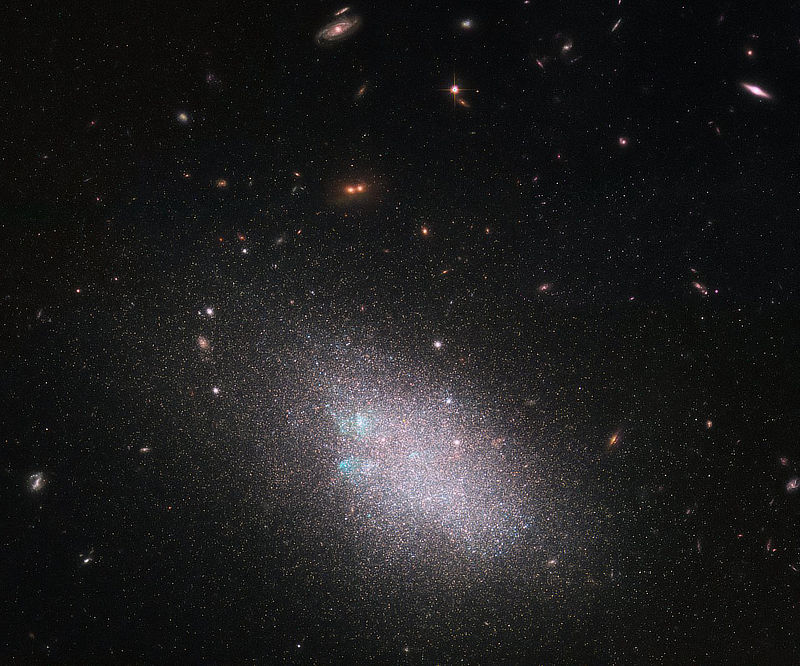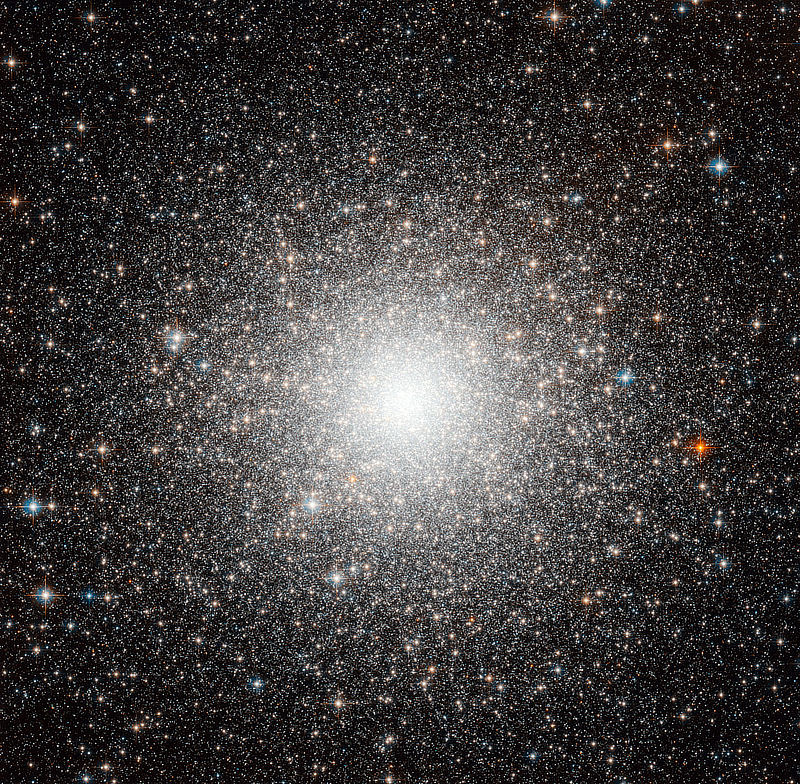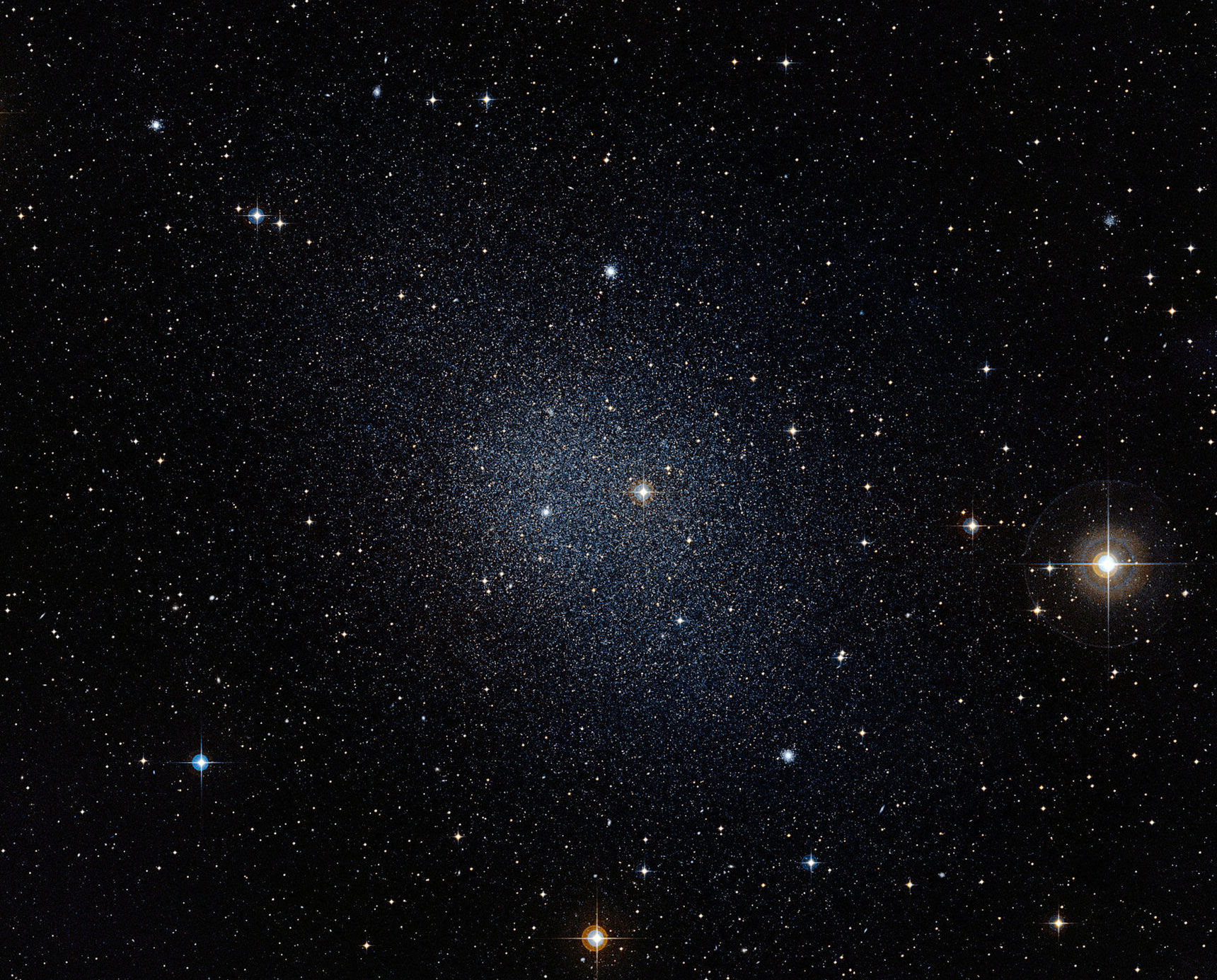Dwarf galaxies are my new favourite thing in astronomy
I have gotten keen on dwarf and low-surface brightness galaxies. They are nifty and lovely.
The Milky Way is populated by many more small, dim stars than we can see even with big telescopes. So too the entire cosmos is sprinkled with many dim little galaxies for every blazing spiral or elliptical galaxy. These dimmer galaxies are either smaller, more diffuse, or both. Beyond our immediate neighbourhood, they are mostly so dim that really only our biggest telescopes can capture them, and even then only with long (expensive) exposures.
So they seem precious partly for their rarity, for being hard-to-find. Here’s an example, before I go any further trying to explain why I like them: UGC 685 in Pisces.

That does blow my mind more than a majestic spiral. It’s more “accessible.” It has a lot fewer stars than a bigger galaxy, but I can see more of them, while still being able to see the shape of the whole. Why? Because you can see lots of their members stars. Which, oddly, is actually quite difficult with bigger galaxies.
Why it’s hard to see stars in a big galaxy
Big spiral galaxies are amazing, of course, but they are almost too amazing. They overwhelm the senses and the mind: the numbers of stars in them is truly impossible to grok. Or even actually see, believe it or not.
When we look at dazzling images of massive galaxies like Andromeda on our gadgets, we are seeing the light from vastly more stars than there are pixels in even the largest screen: the light of about a trillion stars, represented by only about 10 million pixels (on a really good laptop screen, say). One pixel is showing the collective light of about a hundred stars! And that’s an average across the whole image — fewer stars per pixel out in the galactic suburbs, vastly more in the core.
If that’s true, then what are the huge numbers of points of light we see in galaxy photos? They seem to be full of stars.
Many of those bright points are whole clusters of stars, condensed to points of light by distance. The rest are stellar freaks, the very brightest individual stars, the nuclear monsters that blast out much more light than hundreds of stars like our Sun — and such stars make up only a tiny fraction of the total population of the galaxy, probably much less than 1%.

That’s a little bit hard to believe, so here’s a little more visual information to confirm that what looks like another point of light is actually many of them:

Everything else, all the other stars we can’t see, produce only a haze of light, a smooth glow coming from so many stars that, even if every single one were represented by a single modern pixel almost too small to see, the display would have to be about a hundred times larger than anything you could fit on a desk.
And even then we’re still talking about only one star per pixel! One pixel can’t really do one star any justice, like trying to paint a flower on the head of a pin.
We truly can’t see both the shape of a galaxy and actually perceive any individual stars in it except a few of the most extreme. The ordinary galactic citizens cannot be seen.
The dwarf advantage
Dwarf galaxies are small enough to kind of wrap your head around, but big enough to still be really impressive, gorgeous clouds of stars. Technically, they also have huge populations of dimmer stars we can’t actually see. (In this absurdly huge cosmos, even dwarf galaxies have mind-bending properties.)
But it is at least possible to see both their shape and a much more significant proportion of their stars. I can only guess at the ratios, but here’s an approximation that’s probably correct in spirit if not the details:
- Big nearby galaxies: .001% of the stars are bright enough to individually visible, and 99.999% are blurred into a background glow.
- Dwarf galaxies: 1% of the stars are visible, while 99% are not only too dim to see individually, but too few and dim to even produce much of a glow. And that also means higher contrast. The individual stars we can see in these objects have less background glow to compete with.
The dwarf-globular link
This is why I’ve always admired globular clusters, since long before I even knew about dwarf galaxies. They are like little dwarf galaxies. Same thing, really, just a little more symmetrical. M54 is a good specimen:

In fact globular clusters and dwarf galaxies may literally be the same thing.
The nature of the globbies has always been a bit of a mystery, but astronomers are starting to develop some confidence in one origin story: some of them are probably the cores of dwarf galaxies.
The cosmos is full of galaxies of all sizes swirling around each other, and the bigger ones cannibalize the little ones to varying degrees. Many smaller galaxies simply lose all their outer stars, leaving only their core. Their outer regions are too diffuse to hang on to as they pass near much, much larger galaxies.
The core can also be pulled apart if it strays too close to the larger galaxy's core, but they often just end up orbiting.
If this story is true, then we should expect to see some intermediate forms, dwarf galaxies that are in the process of being stripped down to their core: much smaller and more symmetrical than its past self, but still much larger and less symmetrical than it will become as it is whittled down to the core and becomes a true globby.
Maybe this is an example: the Fornax Dwarf Galaxy, a small galaxy the Milky Way has pulled away from the Large Magellanic Cloud. I don’t know, I’m not an astronomer. But it seems like a candidate, and I know for sure that it is extremely pretty.
